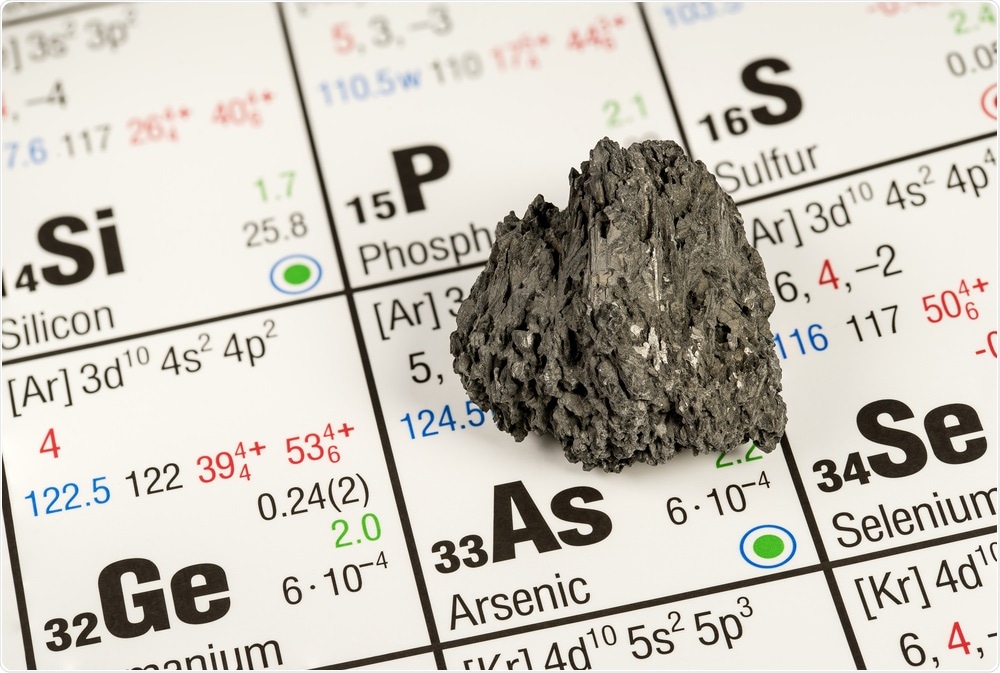Soil pollution with extremely toxic arsenic is a global crisis posing significant risks to human health and the environment.

Arsenic. Image Credit: magnetix/Shutterstock.com
In Canada, more than 7000 sites contaminated with metals like arsenic are deemed “highly concerning” by the government. Past and recent mining operations and wood preservative facilities have left their mark on the environment by leading to a hike in soil arsenic levels by around 1000 times the maximum regulatory health limits.
A specific way in which arsenic-contaminated soils can be restored is to use natural mechanisms evolved in some plants for contamination tolerance.
The legume crop white lupin (L. albus) is one such arsenic tolerant plant species being studied as for sustainable remediation. The mechanism behind arsenic tolerance in white lupin is thought to be the release of plant chemicals directly into soil by roots, but the nature of these compounds is unknown and hard to study due to the complexity of these belowground interactions.”
Adrien Frémont, Study Lead Author and Doctoral Student, Biological Sciences, University of Montreal
Root chemicals an undiscovered country
To examine this, the researchers created nylon pouches that can be kept in proximity to the roots in the soil to trap exuded molecules without destructing the root system. The complex mix of molecules gathered from these pouches was examined with advanced (metabolomic) chemical profiling to recognize the compounds capable of binding metals produced by the Lupin plants in response to large concentrations of arsenic.
Certain metal-binding molecules, phytochelatins, are known to be used internally by plants to combat metal stress but have never been captured before as exuded into polluted soils.
We’re really excited to see how matching new root-soil sampling approaches with advanced metabolomic profiling can yield such unexpected discoveries. We know that plants can drastically change soil properties and can transform or immobilize soil pollution, but the chemistry underlying how they achieve this, and in particular the makeup and function of root-exuded compounds, is still very much an undiscovered country.”
Adrien Frémont, Study Lead Author and Doctoral Student, Biological Sciences, University of Montreal
Plant roots directly altering polluted soils
The scientists intend to branch out into a more in-depth examination of the exact chemical reactions occurring at the root-soil interface, including exploration of various plant species, interactions with microbes, and the challenge of different soil pollution.
It can be a real challenge to research the complex interactions going on belowground between plants and soil, but these findings are rewarding in telling us that natural mechanisms have evolved in plants to deal with this type of pollution.”
Dr Nicholas Brereton, Study Senior Author, University of Montreal
“Although we’re still only just beginning to scratch below the surface of how these plant root strategies work, as we learn more, we can potentially utilize these natural processes to improve soil health and help to alleviate some of the most persistent anthropogenic damage to our environment,” concludes Dr Nicholas Brereton.
Source:
Journal reference:
Frémont, A., et al. (2021) Phytochelatin and coumarin enrichment in root exudates of arsenic-treated white lupin. Plant, Cell and Environment. doi.org/10.1111/pce.14163.